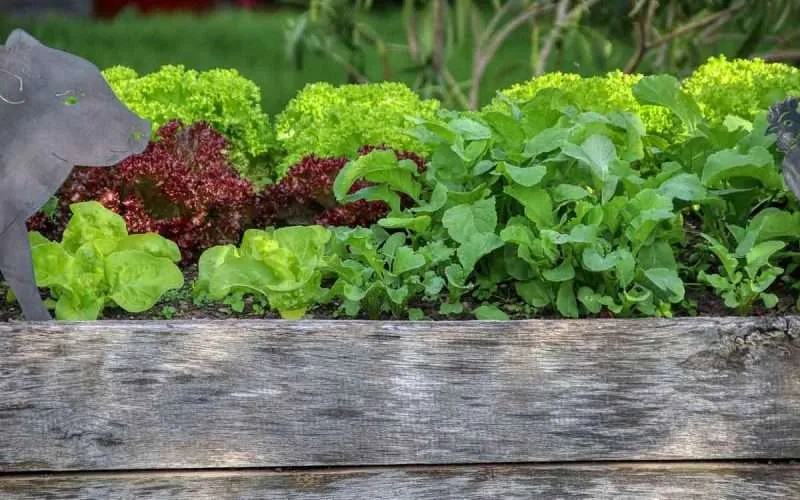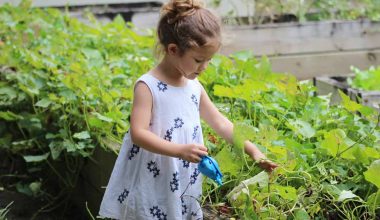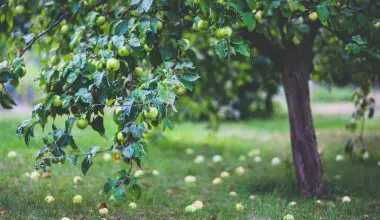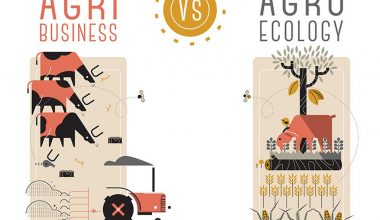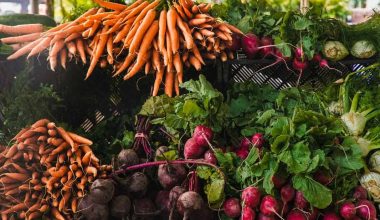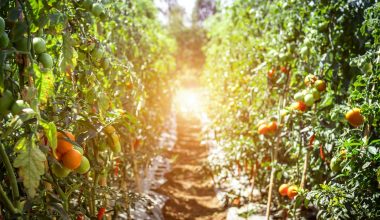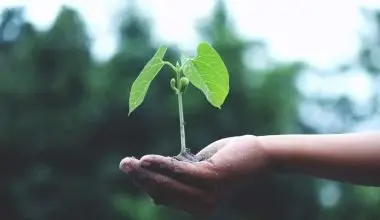Table of Contents Show
Using raised beds for growing vegetables is popular because of how easy and attractive it is. Raised beds solve the problem of spacing, watering, seeding, and reaching plants without stressing your body in any way.
You can create raised beds with anything, such as an infant’s pool or a frame of wooden planks.
Its main purpose is to hold the soil and the plants in it and provide a space to grow.
Basic Materials For Raised Beds
Since you’re in charge, you can create soil of your own choice. Fill your bed with quality topsoil, compost, or some potting soil, perlite, or peat for good drainage and aeration.
You can add old rotting logs in the lower portion of the bed to be cost-effective. Rotting logs will provide nutrients to the soil as they decompose.
Digging a trench and filling it with vegetable scraps, old straw, or aged manure can also help. Cover the trench with some more soil to keep the bed moist. Be careful of straw and hay that has been treated with herbicides, they can affect the growth of vegetables.
Easiest Plants To Grow In Raised Beds
Many vegetables can be planted in raised beds, but some are easier to take care of than others. We will go through a list of these vegetables and also learn to utilize the space in raised beds in a more efficient way.
1. Carrots
Easy-to-plant root vegetables like carrots thrive in the aerated soil of the raised beds. They have tiny seeds that are planted ¼ of an inch deep in the soil. Water it gently to avoid washing them away.
You can plant up to 18 carrots in a square foot of space, depending on the variety. Plant twice as many seeds as you want to grow and keep thinning to make room for remaining plants to grow.
The process of succession sowing can help you in keeping up a continuous harvest throughout the season.
2. Kale
Kale requires a square foot of space per plant. Sprinkle some seeds a square foot apart and remove the weaker seedlings later during their growth. You can also follow the same treatment for planting them in raised beds.
Kale prefers cool weather so it’s better to plant them with vegetables that can provide shade during the afternoon, such as tomatoes.
3. Cucumbers
Cucumbers come in both bush and vining varieties. For small spaces, you can opt for vining cucumbers and provide them support with a trellis. Plant them six inches apart and around 1 inch deep near the trellis.
Cucumbers growing upright on a trellis will make them easy to spot and easy to pick.
4. Lettuce
Lettuce is a cool weather crop that grows quickly. Plant them with larger plants that can provide shade. You can squeeze lettuce in awkward spots and they will be ready to harvest before the larger plants.
You should plant the tiny seeds of lettuce in a single line or a block. Gently water them and cover them with soil to avoid washing them away. plant the seeds as soon you have space in your bed, and keep sowing as they mature.
5. Radishes
Radishes are shade vegetables so planting them with larger plants is a better option. They will be harvest-ready in 35 to 60 days. The seeds are tiny and require gentle watering because they get washed away easily.
It can be squeezed in corners and spots. Keep thinning to provide other plants some room for growth.
6. Spinach
Spinach grows best in cooler weather and will germinate in a week under the right conditions. You can plant spinach just like you would plant radishes. After harvesting spinach, use that spot to grow other plants like radishes and plant spinach again when the weather starts to cool off.
Sprinkle the tiny seeds in a small trench and water them gently after covering them with soil. You can harvest every other spinach plant to make room for other plants to grow.
7. Tomatoes
Tomatoes are one of the easiest vegetables to grow. You can use trellises or cages or let them hang over the raised bed. It’s better to opt for cherry tomatoes if you have less space. Plant the tomato seeds 2 feet apart to give them enough growing space.
Indeterminate/vining tomato variety will require a little more space and will provide harvest throughout the growing season.
8. Cucamelons
Cucamelons are small watermelon-looking vegetables that taste like sweet and lemony cucumbers. These are fast-growing vine plants that require a trellis for support.
You can plant cucamelons in compostable pots indoors for a week or two, 6 weeks before the last frost date. You can plant the entire pot in the bed once it’s hardened off. A compostable pot will decrease the transplant shock giving your plant a better start at growing.
9. Summer Squash
Summer squash is a fast-growing vegetable that comes in all shapes and sizes and in large quantities. Leave a little space between them for ample air circulation or it will face problems like downy mildew on humid days.
You should consider bush varieties like bush zucchini or yellow squash. If you have space for vining varieties then spaghetti or acorn squash are among the options.
Larger varieties of squash might require extra space and support as they grow. You can create a small hammock from materials such as old stockings to provide that extra support.
10. Mint
Mint is a little hard to grow directly from seeds and the best way to plant it would be to borrow some from a friend who has similar soil properties.
You will need to dig a square foot of space and put plenty of roots inside. Water it thoroughly until it establishes itself, it will need very little maintenance after that and becomes drought tolerant.
Mint can easily take over the entire bed so it’s better to harvest it often once it is established. It can be placed in a corner that gets full sun.
11. Peas
Peas can be planted close to each other and more will grow the more you harvest. They start producing peas in just 45 days. You can directly sow the seeds before the season gets hot and they will be the first plant to produce.
You can opt for a dwarf variety for a small space or just let the vines trail on the side of the raised bed if there’s no trellis.
12. Beans
You can plant bush beans if you don’t have a trellis or anything to provide support. Succession planting every two weeks during the summer will give the best harvest. You’ll have to thin them to provide room for growth.
Pole beans are an option if you have a trellis or a wire to support them. They will not require additional care as they’ll have enough room on the trellis. Other plants like spinach and lettuce can also get shade from them.
Bush beans require 6 or 7 inches of space and should be at least an inch deep in the soil.
13. Celery
Celery is ideal for raised beds because of its shallow roots. It’s a cool weather plant so it will require at least 8 to 10 weeks indoors to harden the seedlings, it can be planted in the raised beds after that.
Celery can grow from seeds, young plants, or even from the new plant that grows from celery brought in supermarkets. It requires plenty of water and compost but the soil shouldn’t be soggy or the roots might rot.
Adding a little extra compost throughout the seasons will ensure healthy growth. Once rooted, it provides continuous harvest in just under 80 days.
14. Onions
Onions don’t take up a lot of space and are excellent pest repellent so planting them between larger plants like kale and broccoli is a great choice. Make sure not to plant them near peas or beans.
Onions can grow from tiny bulbs on the onions that you can plant earlier in spring, or you can plant seeds. Give them at least 8 to 10 weeks indoors before the last frost to date planting them outside to give them an edge in the growing season.
15. Peppers
Peppers are low-maintenance vegetables that require a hot and sunny spot. Growing them from seed can be a little challenging especially chili pepper. Plant them indoors 8 to 10 weeks before the last frost date.
A young nursery-bought plant can be planted any time after the period of frost danger. Prune any visible flower on a young pepper plant so all of its energy can be focused on maturing instead of producing.
You should plant it 12 to 18 inches apart. Varieties like bell pepper may require extra support as they mature because they can get really heavy.
16. Beets
They are fast-growing vegetables that start producing in just under 60 days. Your raised bed should be at least 12 inches deep to provide enough space for the roots to grow. Beets should be planted 2 to 3 inches apart and not more than an inch deep.
The soil shouldn’t be soggy but provide your beets with plenty of water. For sweeter and tastier vegetables, harvest them when they are still little and about a couple of inches across.
17. Potatoes
It’s better to set up a personal bed for potatoes. Fill them in half and plant the seeds 3 inches deep and a foot apart. Add up more mulch or soil to fill the rest of the bed as the plant starts growing.
A single plant can grow up to 3 to 5 pounds of potatoes. Early varieties take up less space and can grow close together while the late types require more space. You should know which variety you have and their harvest time to figure out the correct time to dig them up.
Potatoes prefer to grow away from cucumbers, squash, carrots, turnips, and brassicas.
18. Arugula
The seeds of arugula are very tiny and can be easily lost. Place them evenly on the surface of smooth soil and pat them gently with your hand. Water it very lightly to avoid washing them away.
This spicy green arugula is a fast-growing cool weather plant that requires shade in summer. Harvesting them young will provide a sweeter taste while the mature plants are more on the spicy side. The flowers of this plant are also edible.
Leaving the plant to grow in the heat may turn it bitter and bolt.
19. Swiss Chard
Swish chard is a colorful and nutritious plant that can tolerate both heat and cold. It is well suited for both raised beds and containers. You can start planting them earlier in the summer when the season is cool.
Plant them 12 to 18 inches apart and provide them with plenty of water. Swiss chard is edible as soon as the leaves are big enough although the smaller leaves will be more tender and flavorful.
20. Zucchini
Zucchini grows in hot weather under full sun. Plant the seeds in the soil as soon as it is warm. It should be 3 to 4 inches apart and half an inch deep, you’ll need to thin them to 6 inches once they’re established.
Keep the soil aerated by adding aged compost. To prevent blossom end rot, keep the zucchini well watered. They taste best when harvested at 3 to 8 inches in length, larger zucchinis will lose their taste and texture.
Bush varieties require little space, vining varieties also don’t take a lot of space as they can make use of their support and vertical spaces or can just spill over the edges. Vining varieties can also provide shade to other plants.
